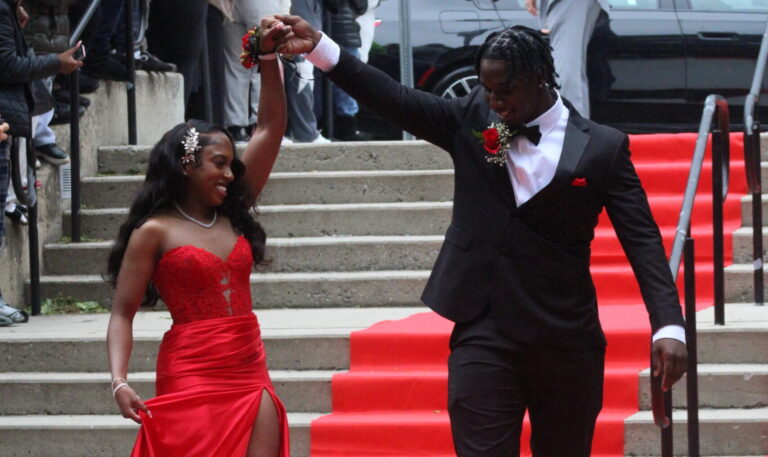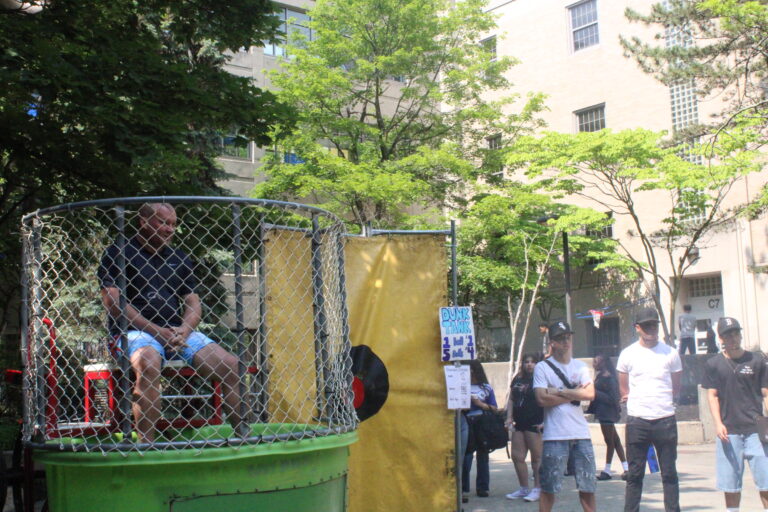
Anti-war demonstrators hold signs which read: "Crimea is not Russia" during a protest action in Simferopol, Ukraine, on Friday, March 14, 2014. (Sergei L. Loiko/Los Angeles Times/MCT)
By NICHOLAS BRAMANTE and ANDREW COGLIANO
Lately in terms of world affairs, one country’s name has been a subject of hot topic and countless reports: Ukraine. Many hear variables and coefficients of the situation, but many do not get the whole equation; nor do they know the product to come. To understand the full extent of the tension in Ukraine, one must understand the past conflicts and tensions that follow the country like ghosts. While the border crisis and the questions about Russian intervention are certainly the main focus of today’s world, Ukraine has seen many hardships before. It is important to understand the past hardships just as it is important to understand relevant modern issues. The two come together to create one real mess of an issue in the East.

The country of Ukraine is the second largest in Europe, and along its southern borders there exists the Crimean Peninsula. It was called this because you guessed it; it was a Peninsula in Crimea ( an autonomous republic inside Ukraine.) This peninsula saw much of the fighting in the Crimean War that lasted from 1853 to 1856. This was an intense war, spilling the blood of more than 500,000 people; it was even more uneventful considering the world went on to have World War I in 1914. Near the end of World War I Russia had its famous Communist Revolution, and Ukraine sustained a brief period of independence in which countless factions fought for control of the region.
After Ukraine became part of the U.S.S.R in 1922, there was a period of quiet, and then Joseph Stalin came into power as one of the world’s most famous dictators. Ignoring everything else that happens in this time period, Stalin’s agricultural policies spread to famine across the Ukraine, a country that happens to be one of the worlds largest exporters of grain now. Up until this point the Crimean Peninsula was actually part of Russia and not Ukraine, despite the Peninsula being physically connected to Ukraine but not to Russia. In 1954 the Peninsula was turned over to Ukraine. Flash forward to 1991 with the Soviet Union’s breakup, and Ukraine voted independence from Russia.
Following a very volatile series of elections in the country with somewhat sketchy situations, the leader of Ukraine came into power with a Europe-friendly policy which of course made Russia furious. The leaders at the time were also just very bad at running a country, allowing Ukraine to fall into massive economic turmoil.
In 2013 Viktor Yanukovych came into power and announced that Ukraine would now focus on strengthening ties with Russia, and not Europe as previously upheld. This led to the famous protests in Kiev, which eventually led to massive riots and the disappearance of Yanukovych from Ukraine. After the protesters installed a temporary government, in marched Vladimir Putin’s military regime with the job of protecting Russian citizens within the Crimean Peninsula.
Not only was this a breach in Ukrainian security, it was a violation of territories. It would be the equivalent of Canada’s armies marching into the Northern United States unannounced; in terms of a world standpoint, it’s a very big deal. So now we are faced with today’s issue: the Crimean Peninsula is already a separate republic from Ukraine, however it has wasted no time in pushing efforts to secede from the country and join Russia; the large ratio of Russian to Ukrainian citizens in the area probably has a little bit to do with this.
In short, we are dealing with a ticking time bomb. While the rest of Ukraine is cooperating with Europe which would bring missiles right to Russia’s borders, the world is debating on how to handle the situation in the Crimean Peninsula.
Do countries intervene? Do they allow everything to unfold on itself? Where is the line and when does Russia cross it? These questions along with a slew of others are what surround the Peninsula today, and are what must be answered before matters are resolved. In a blast from the past, this issue today has been compared to many moves made in the Cold War, where Soviet influence and Communist ideals battled Western (mainly U.S) containment policies.
It may only be a matter of time before Cold War ideals and the “Red Fear” heat up once again and become an international issue. With the word “Ukraine” itself meaning “borderland,” it is important to understand that Ukraine being caught in the middle of European and Russian influence is not a new situation. It is only in recent days that things have flared up following Russia’s invasion of Ukraine.
So where does the U.S stand in this? Well, while the U.S. considers the vote that is to be had that will decide Crimea’s fate illegal, it has at least attempted negotiations with Putin. To say the least, Russia’s invasion of Ukraine made negotiations extremely difficult, if not impossible. With the rest of Europe infuriated by the decisions of Russia, they now look towards the U.K and the U.S as figures to guarantee the security promises made to Ukraine in 1994. As far as military action goes, no other nations have acted or guaranteed intervention this point, with Ukraine’s “appointed” president at the time stating that the country will not use military force to stop the succession (despite the drastic increase in both the military’s size and power after the invasion).
What all this means for the world right now is uncertain, but many are just hoping we do not come into contact with another Syrian crisis. With hope, the world can solve its problems with diplomacy now rather than massive revolutions.
Recently, Ukraine has stepped into the global limelight as the young nation struggles to make a decision that will undoubtedly affect the entire continent of Europe.
With the Crimea Incident still ongoing, and with Putin ordering military action in the peninsula, the rest of the world is watching from afar as the two countries come to terms with their histories. On March 13, 2014, the parliament of Ukraine voted almost unanimously to assemble a national guard force 60,000 men strong. This new force has, unsurprisingly, been deployed almost entirely around the volatile Crimea region, as tensions there rise to Cold War proportions.
Acting President of Ukraine Oleksandr Turchynov stated in a nationwide address to his country that “[they] are doing all [they] can to avoid war, whether in Crimea or in any other region.” Despite this seemingly peaceful statement, Ukraine has wasted no time in proclaiming that it currently stands ready to invade should the need arise. Turchynov has also said that “all of civilized humanity supports [Ukraine],” indicating the groundswell of support from Western Europe as well as the United States. President Obama stated in a conference with Turchynov on March 12 that the issue “is not up to the U.S. It is not up to Russia. It is up to the Ukrainian people to decide their fate.”

As far as internal affairs away from Crimea go, protests in major cities such as Kiev have subsided as the anti-government protesters have been subdued by police. An emphasis has been placed on the fact that police force was only used to quell violent protesters, including a small group of Neo-Nazis who were attempting a coup. Most protests ceased in the end of February, with only minor stand-ins continuing as the citizens of Western Ukraine wait with bated breath to witness the outcome of this feud.
Germany has also become a prominent force in the desire to usher peace into the region. Chancellor Angela Merkel warned Russia that any actions that were deemed hostile against Ukraine would result in German interference. Poland has also sided with Germany, considering that NATO has shipped a large quantity of fighter jets into the eastern side of the country. Merkel also lamented in a recent and unusually emotive speech that Putin was “dragging Europe back into a conflict about spheres of influence and territorial claims.” Merkel grew up under the Iron Curtain, and is apparently very influential towards Putin, who on many occasions has voiced his respect for her as a “strong leader.” With peace negotiations going underway as soon as Friday, March 14, Europe is beginning to calm as the nations finally sit together to discuss their issues, instead of flaunting military might.
On Tuesday, March 18th Russian president Vladimir Putin announced the annexation of Crimea. As told by Putin to a joint session of Russia’s Parliament, the 97% of Crimean residents who voted to join Russia was “an extremely convincing figure.” Ukrainian Prime Minister Arseniy Yatsenyuk is calling the annexation a “robbery” and refuses to accept the actions that Russia has taken. After a Russian attack on a Ukrainian military base (one that left one Ukrainian soldier dead, another wounded, and a few captured) Ukraine has authorized its military to open fire if needed. The conflict between the two nations is quickly turning from political to military, and Ukraine is blaming the Russians for this.





